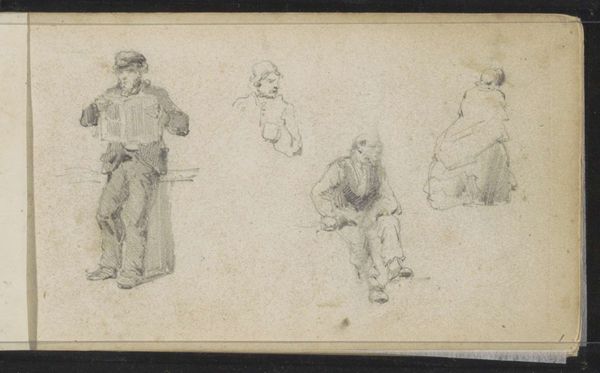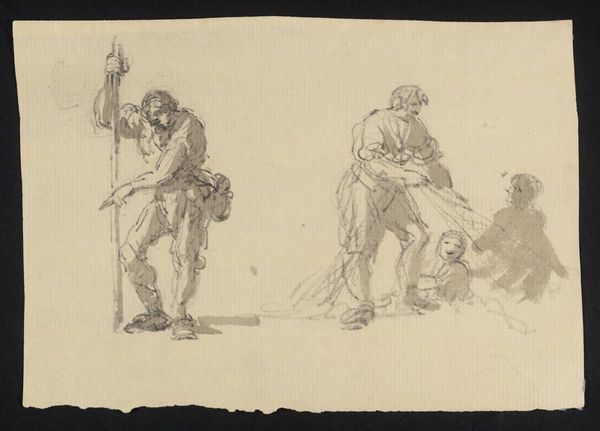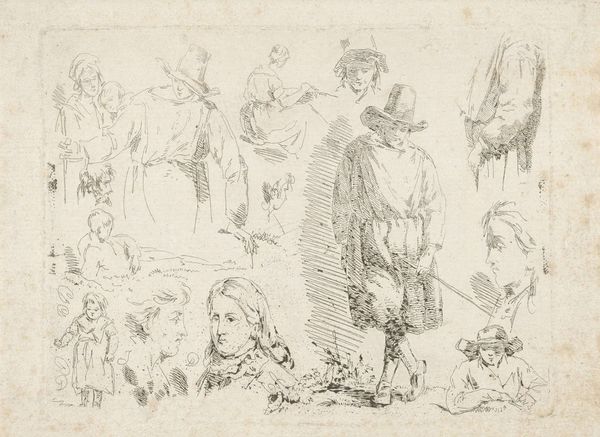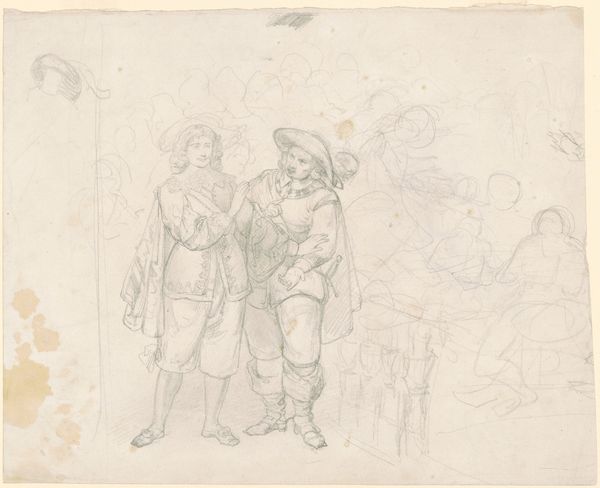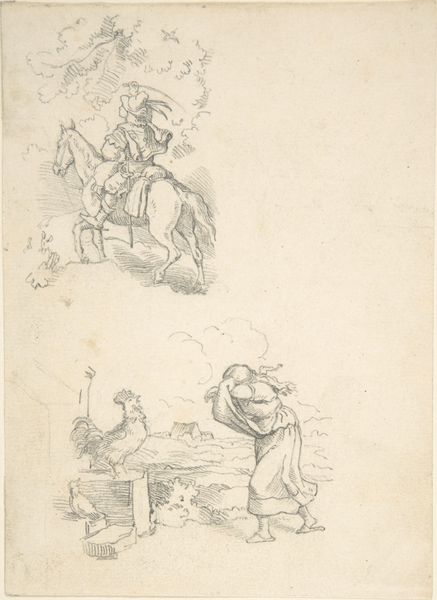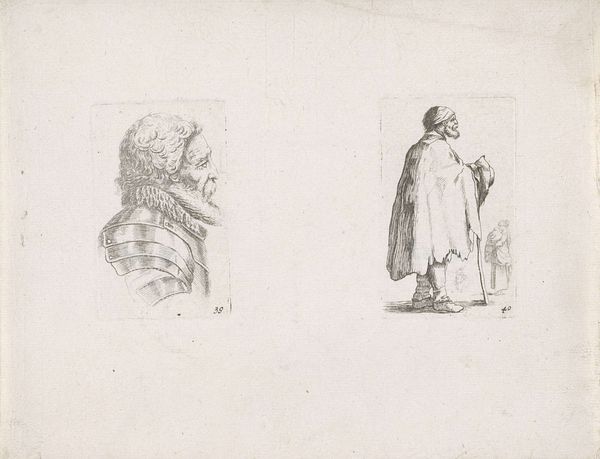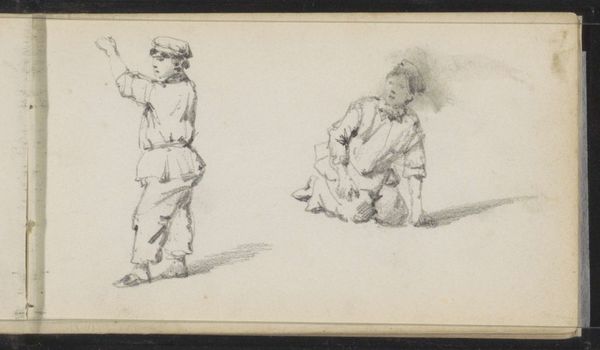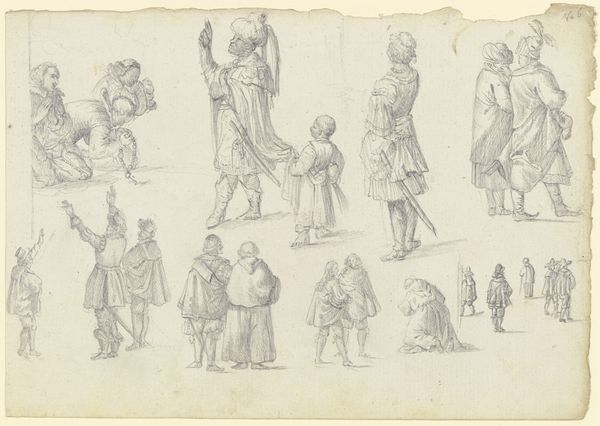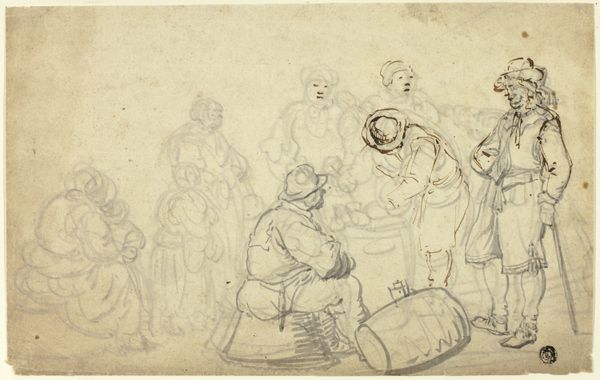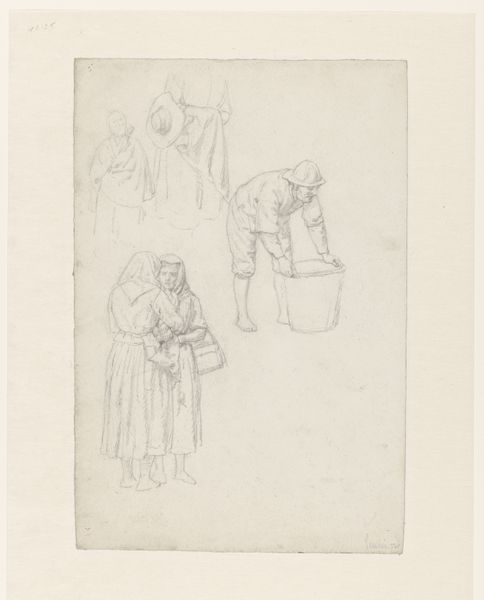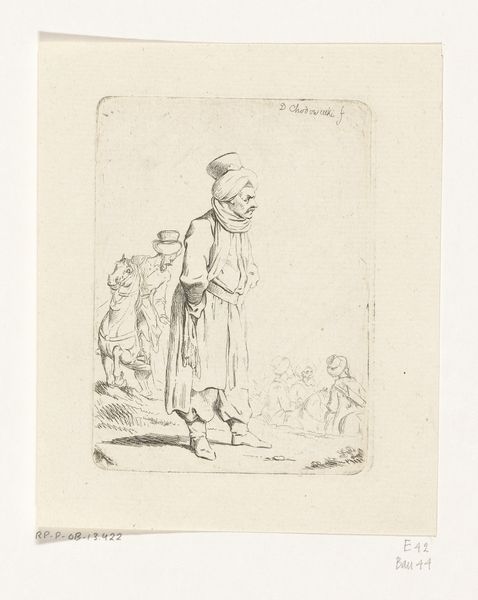
drawing, pencil
#
portrait
#
drawing
#
imaginative character sketch
#
light pencil work
#
quirky sketch
#
dutch-golden-age
#
pencil sketch
#
figuration
#
personal sketchbook
#
idea generation sketch
#
sketchwork
#
pencil
#
sketchbook drawing
#
genre-painting
#
storyboard and sketchbook work
#
sketchbook art
Dimensions: height 190 mm, width 217 mm
Copyright: Rijks Museum: Open Domain
Editor: We're looking at "Six Figures in Different Poses," a pencil drawing by Isaac van Ostade, created sometime between 1645 and 1649. It strikes me as a casual work – perhaps a page from a sketchbook? What catches your eye, looking at its composition? Curator: The composition, rather than any anecdotal narrative, is where its strength resides. Notice how the artist fragments the picture plane; three separate sheets create one image. Observe the dynamic relationships formed, for instance, between the stooping figure and the forward facing one. This intentional disruption of space provokes interesting tension, wouldn't you agree? Editor: Yes, I do. It's almost collage-like, before collage! So, is the meaning held within the lines and the shapes themselves rather than what the figures are "doing"? Curator: Precisely. Consider the lines. They are economic, but carefully placed. They are not aiming to define reality; instead, they create a sense of form. Note the lack of shading in areas, directing your eye towards stark, planar geometry. Even the negative space becomes just as active. Van Ostade emphasizes formal relationships, inviting us to consider the intrinsic aesthetic value of the forms represented. How do the tonal shifts alter your perceptions? Editor: I see what you mean. Because of the light, sketchy feel, I initially assumed these were casual studies, but the considered placement and line work do imply a higher level of intention. Curator: It urges a re-evaluation of “sketch” itself, would you agree? Perhaps “Six Figures in Different Poses” isn’t just preliminary. Perhaps its form defines the piece’s reason for being. Editor: This has totally shifted my view! I’ll be rethinking how I look at sketches from now on, focusing more on their form and less on their potential function.
Comments
rijksmuseum about 2 years ago
⋮
Just like the drawing by Roghman that was cut into two, this one by Van Ostade was cut into pieces sometime in the 18th century. An art dealer or collector turned it into three separate drawings, each with its own framing lines. This notwithstanding, they have always remained together and the original sheet could be pieced together again.
Join the conversation
Join millions of artists and users on Artera today and experience the ultimate creative platform.
